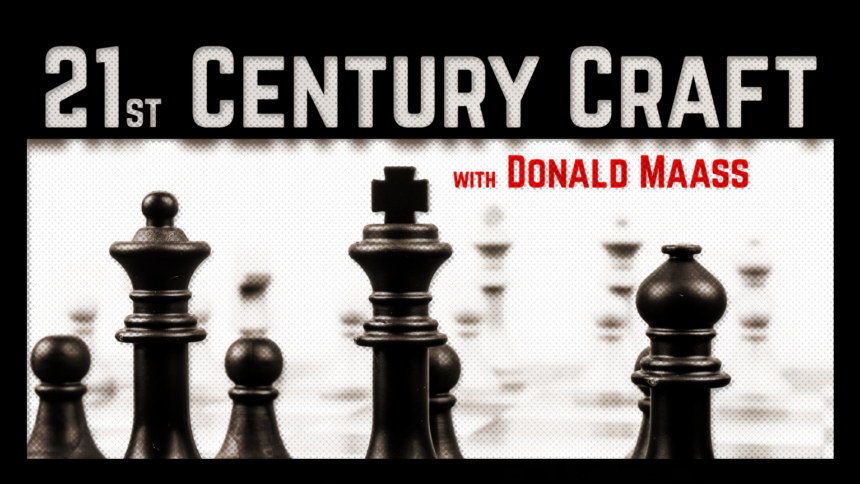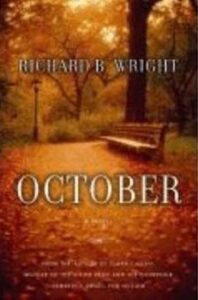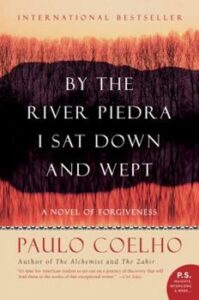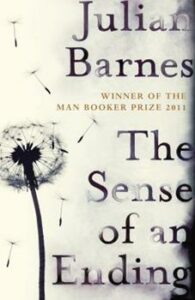Old Friends
By Donald Maass | November 1, 2023 |

Perhaps it is because I will see some of you next week in Salem? I have been thinking lately about old friends. I have several, treasured pals that go back to junior high and high school. One, still a close friend, was my high school girlfriend. They are the anchors of my life.
In fiction, longtime friendships lend a sense of the passage of time. They add a mellow richness to a tale. Old friends are easy to find in novels, no surprise, and such friendships may be the very foundation of a series, as in Elena Ferrante’s Neapolitan novels, beginning with My Brilliant Friend (2011).
In such novels, friendships are elevated, unique, special. How is that effect achieved? What actually on the page provides that feeling of extraordinariness that makes a friendship matter? The method matters to us because heightening is one of the primary effects necessary to enduring fiction. Even when stories are about “ordinary” people, it’s not their ordinariness that grips us. It’s how their lives and experiences are elevated.
Previously in this space, I have asserted that what connects readers to stories across the barriers of time, distance, culture and language, are the small human experiences that all people have in common. (You can read about that HERE.) Paradoxically, we also identify with human lives and events when they are extraordinary. High drama magnifies our own struggles. Larger-than-life characters are scaled up versions of us mere mortals.
The heightening effect can be seen at work in the portrayal of long friendships, too. Let’s find out exactly how that works.
Old Friends Aren’t Just Anyone
 Award-winning Canadian author Richard B. Wright turned to old friends in his 2007 novel, October, which begins with James Hillyer arriving in England to be with his grown daughter, who has been diagnosed with cancer. While there, he by chance runs into Gabriel Fontaine, whom he hasn’t seen in over sixty years. They met as adolescents on holiday on the Gaspé coast of Québec, overlooking the Gulf of St. Lawrence. From the outset, Gabriel was not any ordinary boy:
Award-winning Canadian author Richard B. Wright turned to old friends in his 2007 novel, October, which begins with James Hillyer arriving in England to be with his grown daughter, who has been diagnosed with cancer. While there, he by chance runs into Gabriel Fontaine, whom he hasn’t seen in over sixty years. They met as adolescents on holiday on the Gaspé coast of Québec, overlooking the Gulf of St. Lawrence. From the outset, Gabriel was not any ordinary boy:
When I first saw Gabriel he was sixteen, an extravagantly handsome youth who might have passed for the younger brother of the matinee idol Tyrone Power. The dark hair, sleekly oiled in the fashion of the day, had a perfect parting. He was leaning forward, talking to a young couple who were on their honeymoon. Gabriel was saying something that made them laugh. I would soon discover that he was filled with salacious speculation about what they were getting up to in their room at night. Gabriel was wearing pleated slacks, an open-necked white shirt and a sleeveless sweater on which was a pattern of little marching elephants. White and brown saddle shoes. I remember what he was wearing so exactly because I had seen clothes just like them on the boys at Groveland School, and for reasons I can’t explain, even to myself, I despised this preppy garb, popular among a certain class of the 1940s. A class, I should add, of which I myself was a member.
Gabriel stands out. He immediately stirs in James a certain antipathy—tinged with envy. This is even before we learn that Gabriel is confined to a wheelchair, due to polio; or before we know of James and Gabriel’s rivalry over a pretty French-Canadian girl named Odette. James’s confinement to a wheelchair adds to his beauty an air of tragedy:
Gabriel was right. People did stare. But not only because he was crippled. He was wrong about that. They stared because they saw a beautiful young man in a ruined body. We are intrigued by the vagaries of fortune, how good luck and bad are often conjoined. How then could people help gaping at a boy who had looks and money, but who faced a slow-motion journey through life, entirely dependent on servants or goodwill of plain fellows like myself.
Back in the present, the now-elderly Gabriel asks James to accompany him on a trip to Zurich, where he plans to be legally euthanized. He too is dying of cancer. As the present journey unfolds alongside the parallel back story involving Odette, the mild action of the story is overshadowed with the heavy weight of impending death. What happens is, for James, life defining and never forgotten. Such is the weight of friendship.
 Old lovers are like old friends, too. Brazilian author Paulo Coelho’s 1994 novel By The River Piedra I Sat Down and Wept is a reunion tale concerning a law student named Pilar and her childhood friend, unnamed, who has become a seminarian and a charismatic healer and popular speaker. Set mostly in the Pyrenees mountains, their rekindled passion runs up against his faith, as well as her struggle to regain hers, which makes for some high-minded conflict as Pilar approaches the “Magic Moment” of choice about which her friend lectures.
Old lovers are like old friends, too. Brazilian author Paulo Coelho’s 1994 novel By The River Piedra I Sat Down and Wept is a reunion tale concerning a law student named Pilar and her childhood friend, unnamed, who has become a seminarian and a charismatic healer and popular speaker. Set mostly in the Pyrenees mountains, their rekindled passion runs up against his faith, as well as her struggle to regain hers, which makes for some high-minded conflict as Pilar approaches the “Magic Moment” of choice about which her friend lectures.
At Lourdes, Pilar faces one of many moments of doubt and hope:
Somewhere in the world, a home awaited us. A place where we could care for daughters or sons who would come home from school, fill our house with joy, and never pick up after themselves.
We walked in silence through the rain until we finally reached the place where the visions of Mary had occurred. It was exactly as I had imagined: the grotto, the statue of Our Lady, and the fountain—protected by glass—where the miracle of the water had taken place. Some pilgrims were praying; others were seated silently inside the grotto, their eyes closed. A river ran past the entrance, and the sound of water made me feel at peace. As soon as I saw the image, I said a quick prayer, asking the Virgin to help me—my heart needed no more suffering.
If the pain must come, may it come quickly. Because I have a life to live, and I need to live it in the best way possible. If he has to make a choice, may he make it now. Then I will either wait for him or forget him.
Waiting is painful. Forgetting is painful. But not knowing which to do is the worst kind of suffering.
I imagine that Pilar is not the first woman to love a man bound (maybe) for the priesthood and torn by inner conflict, as he is too, but Coelho doesn’t treat this will-they-won’t-they story as average. Instead, he elevates it to become a soul struggle, a fight of love against faith, which somehow in the end must honor both.
 Julian Barnes’s 2011 Booker Prize-winning novel The Sense of an Ending is another reunion story, of sorts, as retired teacher Tony Webster is prodded to review his life as he thinks about his long-ago friendship with a recently deceased school chum, Adrian Finn, who has died by suicide. A secret that soured their relationship is revealed at the end of the novel, but that’s not the point of the story. The point is that friendship is shaped by time and memory, and in the end is more than anything a mirror to the self:
Julian Barnes’s 2011 Booker Prize-winning novel The Sense of an Ending is another reunion story, of sorts, as retired teacher Tony Webster is prodded to review his life as he thinks about his long-ago friendship with a recently deceased school chum, Adrian Finn, who has died by suicide. A secret that soured their relationship is revealed at the end of the novel, but that’s not the point of the story. The point is that friendship is shaped by time and memory, and in the end is more than anything a mirror to the self:
Then I thought more about Adrian. From the beginning, he had always seen more clearly than the rest of us. While we luxuriated in the doldrums of adolescence, imagining our routine discontent to be an original response to the human condition, Adrian was already looking farther ahead and wider around. He felt life more clearly too – even, perhaps especially, when he came to decide that it wasn’t worth the candle. Compared to him, I had always been a muddler, unable to learn much from the few lessons life provided me with. In my terms, I settled for the realities of life, and submitted to its necessities; if this, then that, and so the years passed. In Adrian’s terms, I gave up on life, gave up on examining it, took it as it came. And so, for the first time, I began to feel a more general remorse – a feeling somewhere between self-pity and self-hatred – about my whole life. All of it. I had lost the friends of my youth. I had lost the love of my wife. I had abandoned the ambitions I had entertained. I had wanted life not to bother me too much, and had succeeded –and how pitiful that was.
Average, that’s what I’d been…
Ouch. How painful to come up short in life and realize it. Tony Webster’s painful self-assessment, though, is all the more painful when measured against the fuller (if tragically compromised) life of his friend. Barnes’s novel is a reflection framed as a comparison. Like Herman Hesse’s cult classic, Sidhartha (1922), it’s a tale of divergent paths which ultimately leads its narrator to self-understanding.
Applied Heightening
Thus, we can draw from this look at friendship stories a couple of principles regarding heightening:
- A heightened friend is not any ordinary person – not in the eyes of the narrator/protagonist.
- A heightened friendship is more than a journey through time – it’s journey to find truth and learn what matters.
- A heightened friendship is, on one level, about being friends but even more it is about discovering oneself.
These principles of heightening can be adapted to almost any aspect of a novel: plot, place, character arc, and more. See if any of the following questions point the way to heightening the novel you’re working on currently:
- Who in your story looms large, by reputation, actions and speech? How is your protagonist affected and changed by that character?
- Where in your story is the place of legend? What about it inspires or terrifies your protagonist? What pivotal or climactic event can happen there?
- The problem at the heart of your story is personal for your protagonist, but how is it also a problem, conflict, question or quest that humans have faced throughout history? Borrow something from myth, history or culture to highlight the parallel.
- How can your protagonist be unable to avoid the forces that work upon everyone else in the story? Against what greater force, mindset, trap, or seduction can your protagonist struggle? When does your protagonist surrender? When does your protagonist resist?
- Your protagonist has something to do, but also something to find—inside. What? Why is that difficult? How do the story’s events deepen the quest and finally bring it to an end?
Your story is about one person (maybe more), one place (perhaps several), and one problem (layered though it may be). The more that you make it detailed, local, specific and fired by your own experience, the more your story becomes universal.
In your world, we see ours. In your protagonist, we quest for our own meaning and search for ourselves. Like friendship, your story is our mirror. Heighten it, and we will see ourselves and our world clearly. And isn’t that what you want?
Is there an old friendship in your WIP? Where does that lead? What does it show?
[coffee]









Your post brings to mind Alan Turing’s friendship with Christopher, his ‘universal thinking machine’ (aka his prototype digital computer) named after a real-life school chum and the lifechanging fictional friendship of Sebastian Flyte and Charles Ryder in Evelyn Waugh’s ‘Brideshead Revisited’… more dynamic kinships than casual acquaintances from school. Thank you for this post and the happy memories it stirs.
Sebastian and Charles! A story that I think illustrates my points, thanks for reminding me of it, been years since I read Brideshead.
I’m a people watcher. I think it’s fascinating how you can always recognize good friends, especially young women besties, by the way they dress and style themselves the same. Sometimes I think they look like twins, but now I realize they are mirrors. Friendship can be a mirror. Cool.
I have several old friendships in my story. Old friends are great at asking the tough questions, calling to action and getting to the truth of a problem. They also have a shared sense of humor and a way of inspiring each other.
On the other hand, sometimes there’s a point in an old friendship where you can see your old ways in your friend and it becomes clear you need to move on and change.
Lots to think about today and try to work into the words.
Thank you, Don! Safe travels to you and all in trains, planes and automobiles. See you soon.
Great thoughts about friends, definitely to be used in a novel. So? We’re waiting…
Makes me think of my relationship with my deceased best friend. Thinking about unearthing deep feelings and choices we’ve made that cut into our relationship is scary. I’m not sure I’m up for that. But it makes me think about the possibility for my characters. That’s safe.
So sorry about your friend. I haven’t yet lost any of the big ones in my life, and I can’t imagine what it will be like if I do. I suppose I will have to write.
I’ve been discovering how two sixteen-year-olds can feel like ancient friends, even at their age. Everything about life is heightened for them, especially when one of them starts to change. In another WIP, I have two older men who lead very different lives but who maintain a deep friendship almost because of it. So much inspiration here! Wonderful post. Thank you!!
Most welcome.
Hi Don, your post makes me consider one word: adjustment. In human relationships we are constantly called upon to adjust change. Fiction often can show the way, with gradual change, immediate change and the sadness and angst when people cannot accept change; when someone refuses to accept a meaningful apology and thus a relationship must end. This is the stuff of drama or quiet sadness. The examples you provided are worthy of reading, for age is all about CHANGE, and our work must reflect that in order to relate. A good friend now has a debilitating illness, but that won’t CHANGE my love for her and my eagerness to be with her. And today, your post has reminded all of us: change is inevitable. Embrace it in your writing and in your life.
Adjustment, yes, not only to changing circumstances, and a changing friend, but to a changing self. The stuff of story.
Hi, Don. I look forward to seeing you next week in Salem. This post is timely for me. My WIP centers on three male friends in their early 30s. They have been friends since childhood. The plot plays with the idea of triangles: a political triangle based on the differing world views of the three friends and a love triangle involving the main character. The protagonist is a liberal with dreams of running for Congress. His friends include a centrist who is the arbiter of their political arguments and a charismatic MAGA right-winger. They get together regularly for dinner and argue about politics. The main character finds himself in a love triangle and turns to his friends for advice. Despite their differences, these friends are bound by a longstanding ties and a fierce loyalty to one another. They would do anything to help their lifelong friends. Your post, and especially the questions you pose, will help me to explore more deeply how i can exploit their emotional bonds and how that will inform and drive the story. Thanks again.
Wonderful premise, Chris, look forward to hearing more about it!
Don —
Have you been reading over my shoulder? Hacking my iPad? Telepathically tapping my brain?
My current WIP is a friendship story.
Three women meet on a work-study program abroad in 1979. Their friendships alter their lives then and reverberate through the decades until a violent tragedy in 2019, which changes everything for them again and reverberates forward to the present day.
I’m writing the zero draft as a NaNoWriMo project.
My favorite fictional friendships take me back to Christopher Robin and Winnie-the-Pooh, and Charlotte and Wilbur. But I’m also thinking of “American Pastoral” by Philip Roth. I think all of three of these meet your criteria for heightened friendship stories?
Thank you, as always,
Marcie
P.S. I’m registered for your WFWA workshop next week. Looking forward to it!
Why yes, I HAVE hacked your iPad! But, hmm, there’s not much of this new project yet, good thing it’s NaNoWriMo!
I was told once that anyone who could gain five friends, who would do anything for them, they’d be the richest person to have ever lived.
Next week, I have the unfortunate task of serving as pallbearer. My best friend’s mother passed away from cancer. We grew up together, spending countless nights at either’s house. Racing our Ford Rangers up and down country roads and getting into the sort of trouble that didn’t surprise anybody in our small town. After high school our paths diverged. There were times when we wouldn’t call each other for months, and times we didn’t see each other for years.
The question I have is whether this friendship reminds me of who I was, or who I really am. Have I changed?
My WIP has a friendship that wrestles with this question. My MC, upon seeing his friend again, wonders if moving out of his small town had changed him, or he’s being dishonest with himself. That he’s not capable of changing at all.
Thanks Don, your posts are always helpful.
James, I think we all change, in some way. I had a friendship, a girl my age, we were inseparable as children: make-believe a big part of it. But then you grow, you move away…often from the place, maybe not from the memories. Write about them. Don’t lose them. They fuel our words..because they are often so damn vivid.
Who I was versus who I really am…story stuff!
Also Frodo and Sam.
And Gimli and Legolas!
I think too of the friendships between generations, though perhaps it becomes more mentor-ish then, one way or the other as different generations can learn from each other. I think too of Winnie the Pooh and his circle of friends, and of Tracy Deonn’s Legend Born. In my story, I have close-knit cousins who remain friends into adulthood, within that nest of the older generations. There’s an ebb and flow, yet underneath that shifting of intimacy and distance is a sense of commitment towards each other and towards the friendship/group of friends as its own entity.
Thank you, Don, for this post and the questions at the end. Lots of thoughts to sift through.
John Knowles, A Separate Peace
Don, I based my first (and undistinguished) novel on a real hitchhiking trip I took across Canada with my best friend when we were very young. Many of the real experiences were crazed enough to gild the story, but an invented character that takes up with them on the journey—a woman both male characters desire—puts severe cracks, seemingly unfixable, in their friendship. There are costs, but some gains too.
Wish I could make it to one of your WU workshops IRL, but thank the stars for the mini-workshops of every one of your posts.
Thank you again.
I never thought of heightening, didn’t even have a name for it. But it’s exactly what’s missing sometimes when a beat or scene doesn’t have the punch I feel it needs.
I love friendship stories. They loom large in children’s literature and one of my favorite picture books is Farfallina and Marcel by Holly Keller. We experience everything–the friendship, the changes, the loss, and a return to friendship. So many chapter books also have old friends front and center: Frog and Toad, Oliver and Amanda (piglet siblings), Henry and Mudge (boy and dog). In my middle grade, friendship plays a huge role–specifically falling out with one, but gaining another and I often dream about how they’ll be as grown-ups. My main character will be discerning a religious vocation and I must see how a master like Paulo Coelho wrote his. I think of it not as love against faith, but discerning between two loves, which is the hardest to do. Thank you for a wonderful look at friendship stories. What would we do without friends? I’m jealous you all will be in Salem. Enjoy!!!